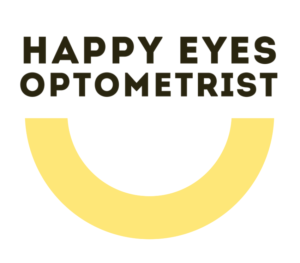Early action makes a lifelong difference
“Lazy eye” usually refers to amblyopia—reduced vision in one eye because the brain favours the other eye during childhood. Strabismus is an eye turn (eyes not aligned together). Either can occur alone, but they often co-exist. Early detection and treatment are critical while the visual system is still developing.
Amblyopia vs Strabismus — what’s the difference?
- Amblyopia (lazy eye)
- The brain reduces input from one eye, leading to poorer vision even with glasses.
- Causes: significant prescription difference between eyes (anisometropia), constant blur, strabismus, or early childhood eye disease.
- Key point: Treating amblyopia is time-sensitive—best outcomes occur in early childhood, but older children can still improve with the right plan.
- Strabismus (eye turn)
- Misalignment of the eyes (inward, outward, up, or down), constant or intermittent.
- May cause double vision, eye strain, or the brain switching off one eye (which can lead to amblyopia).
- Types include esotropia (in-turn), exotropia (out-turn), hypertropia (up), hypotropia (down).
Signs parents and teachers may notice
- One eye wanders or turns (especially when tired or unwell)
- Squinting, head tilt, or closing one eye in bright light
- Poor depth perception (clumsiness, catching/throwing difficulties)
- Reading difficulties, losing place, short attention with close work
- Complaints of headaches, eye strain, or double vision
- Child covering one eye to see better
If you notice any of these, book an assessment promptly—earlier is easier.
How Happy Eyes assesses lazy eye & strabismus
- Comprehensive children’s eye exam (vision, refraction)
- Binocular vision & alignment tests (eye teaming, tracking, focusing)
- Stereopsis (3D depth) testing
- Ocular health check (front and back of eye)
- Cycloplegic refraction may be recommended to measure the full prescription accurately in children
We explain findings clearly and outline a practical plan for your family.
Treatment options (tailored to your child)
- Glasses
- Correct focusing differences or high hyperopia/astigmatism that drive misalignment or blur.
- Sometimes glasses alone straighten certain strabismus types.
- Amblyopia therapy
- Patching the stronger eye to stimulate the weaker eye (daily schedule tailored to age and severity).
- Atropine penalisation (weekend or daily drop in the stronger eye) as an alternative or adjunct to patching.
- Vision therapy / orthoptics
- Structured exercises to improve focusing, tracking, and eye-teaming (case-dependent).
- Strabismus surgery (ophthalmology)
- For constant or significant deviations, or when glasses/therapy are insufficient.
- We arrange referral and provide pre- and post-op co-management.
- Ongoing monitoring
- Regular reviews track vision in each eye, alignment, and depth perception so therapy can be adjusted as your child improves.
The earlier treatment begins, the better the potential outcome for vision in the amblyopic eye and for comfortable, stable alignment.
FAQs
Is my child too old to treat a lazy eye?
Best results are in younger years, but meaningful improvement can still occur in older children with consistent therapy. We’ll advise realistically.
Will glasses fix the eye turn?
Sometimes yes—especially for certain inward turns linked with hyperopia. Other cases need therapy and/or surgery.
How long will patching take?
Programs vary from weeks to months. We tailor hours per day/week and adjust as vision improves.
Can adults develop strabismus?
Yes (e.g., after trauma, nerve palsy, or decompensation). Adults should be assessed promptly—new double vision is urgent.
Take the first step today
A simple, child-friendly exam can set your child on the path to better vision and alignment.
